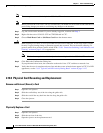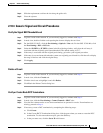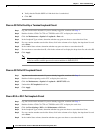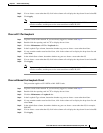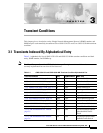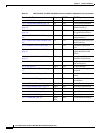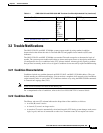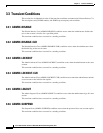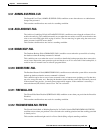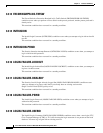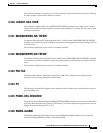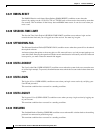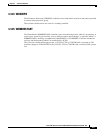
3-3
Cisco ONS 15310-CL and Cisco ONS 15310-MA Troubleshooting Guide, R7.0
Chapter 3 Transient Conditions
3.2 Trouble Notifications
3.2 Trouble Notifications
The ONS 15310-CL and ONS 15310-MA systems report trouble by using standard condition
characteristics that follow the rules in Telcordia GR-253 and graphical user interface (GUI) state
indicators.
The ONS 15310-CL and ONS 15310-MA use standard Telcordia categories to characterize levels of
trouble. The system reports trouble notifications as alarms and reports status or descriptive notifications
(if configured to do so) as conditions in the CTC Alarms window. Alarms typically signify a problem
that you need to remedy, such as a loss of signal. Conditions do not necessarily require troubleshooting.
3.2.1 Condition Characteristics
Conditions include any problem detected on ONS 15310-CL and ONS 15310-MA shelves. They can
include standing or transient notifications. You can retrieve a snapshot of all currently raised conditions
on the network, node, or card in the CTC Conditions window or by using the RTRV-COND commands
in Transaction Language One (TL1).
Note Some cleared conditions are found on the History tab.
For a comprehensive list of conditions, refer to the Cisco ONS SONET TL1 Command Guide.
3.2.2 Condition States
The History tab state (ST) column indicates the disposition of the condition, as follows:
• A raised (R) event is active.
• A cleared (C) event is no longer active.
• A transient (T) event is automatically raised and cleared in CTC during system changes such as user
login, log out, and loss of connection to node view. Transient events do not require user action.
3.3.34 WKSWPR, page 3-9 2R,
TRUNK,
EQPT,
ESCON,
FC, GE,
ISC,
OCN,
STSMON,
VT-MON
2650 switchedToProtection
3.3.35 WRMRESTART, page 3-9 NE 2660 warmRestart
Table 3-1 ONS 15310-CL and ONS 15310-MA Transient Condition Alphabetical List (continued)
Transient Condition Entity SNMP Number SNMP Trap




